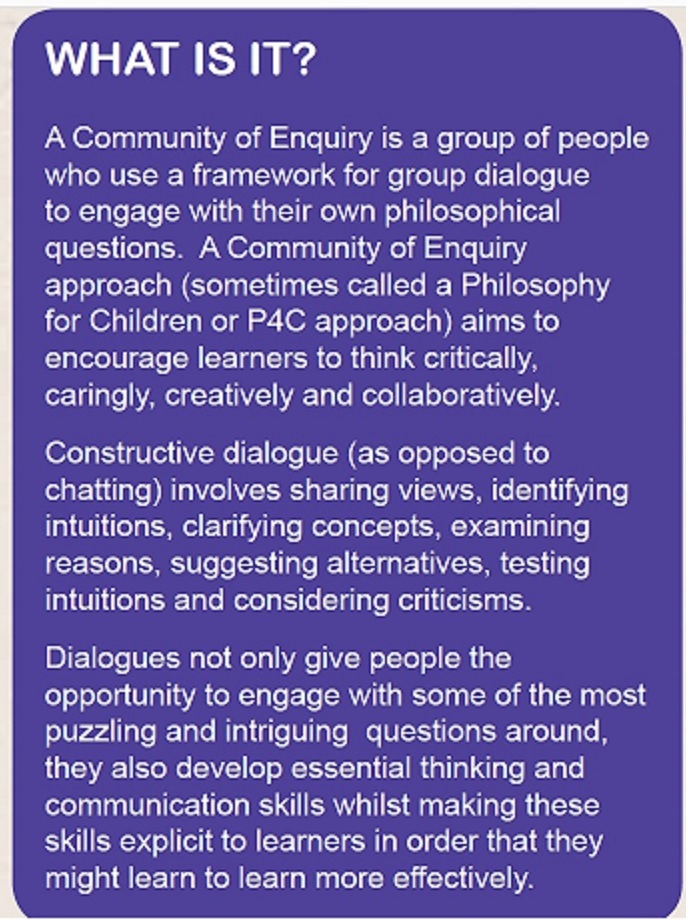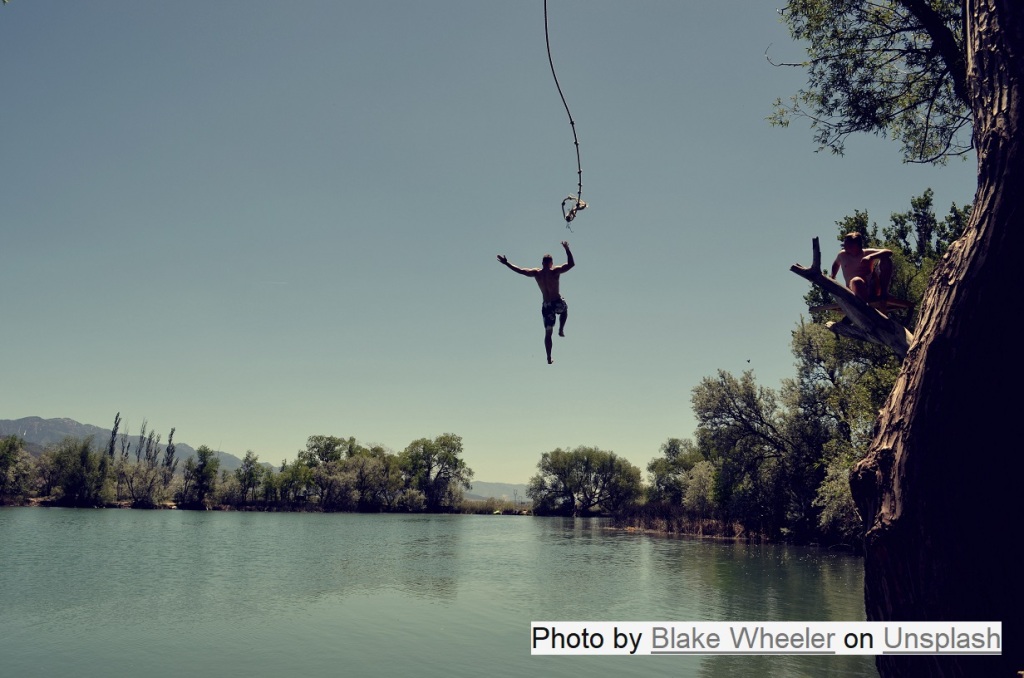It was the first time that I heard of the concept of a ‘community of inquiry’ (CoI) in Topic 4. By mistake, I Googled ‘community of enquiry’ (CoE) and came across two definitions for CoE:
- The first is from thinkingspace ( w w w . t h i n k i n g s p a c e . o r g . u k – Community-of-Enquiry-TS-Tools.pdf)

- The second definition is from iriss and defines a CoE as a style of presenting a workshop. The workshop starts with a short video clip, or a research paper, or a presentation by an academic. These presentations act as a prompt to make the participants think; then it creates a space for the participants to collaborate, explore and ask meaningful questions. The questions are not prescribed, but come from the group (community). (https://www.iriss.org.uk/resources/tools/community-enquiry).
Nice ideas, critical thinking, dialogue, discourse, criticism and mostly presence of all participants in a community.
Then I went to the suggested readings, and discovered that it is not a CoE but a Community of Inquiry (CoI). An inquiry is an investigation; it encourages critical thinking, logical organisation and processing of evidence. Lipman (1991) is of the view that education is inquiry, and a ‘community of inquiry as a rigorous, democratic and reflective form of discussion built up over time with the same group of learners’. These concepts were used and adapted for online learning by Garrison and his co-workers in 1996 (Garrison, 2017; Vaughan et al., 2013).
In a blended or online learning environment the CoI framework is made up of three entities: social, teaching and cognitive presence. Only when all three entities intersect will the learners have a deep learning experience.
The concept ‘presence’ is quite vague. In my ONL experience it was attending the group meetings and webinars, reading the notice board, collaborating online and in the fish document, reflecting in a blog, and then reading other groups’ presentations and blogs. I was side-tracked to interesting topics very often (e.g. CoE instead of CoI).
I find that two weeks was not really enough time to grasp and think about what presence really means. Am I ready to design a blended online course? Maybe, I have enough things to think about, and tools to consider. But… do it, jump!

Garrison, D. R. (2017). E-Learning in the 21st Century: A Community of Inquiry Framework for Research and Practice (3rd Edition). London: Routledge/Taylor and Francis.
Lipman, M. (1991). Thinking in education. Cambridge: Cambridge University Press.
Vaughan, N.D., Cleveland-Innes, M., & Garrison, D.R. (2013). Teaching in blended learning environments: Creating and sustaining communities of inquiry. Edmonton: AU Press. Chapter 1 ‘The Community of Inquiry Conceptual framework’.